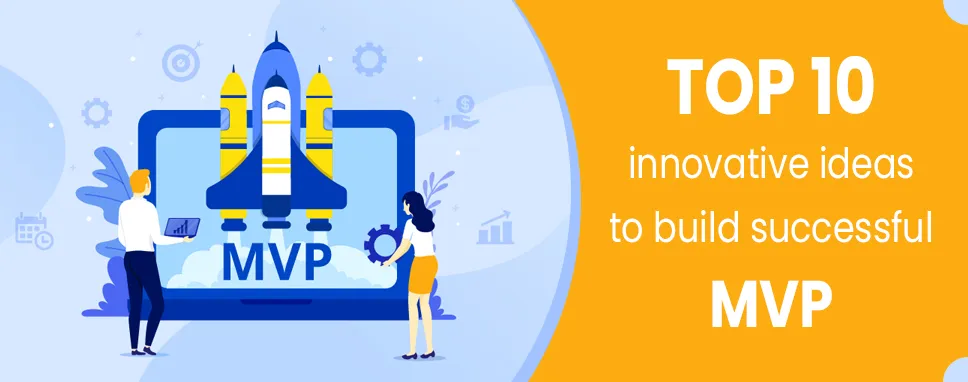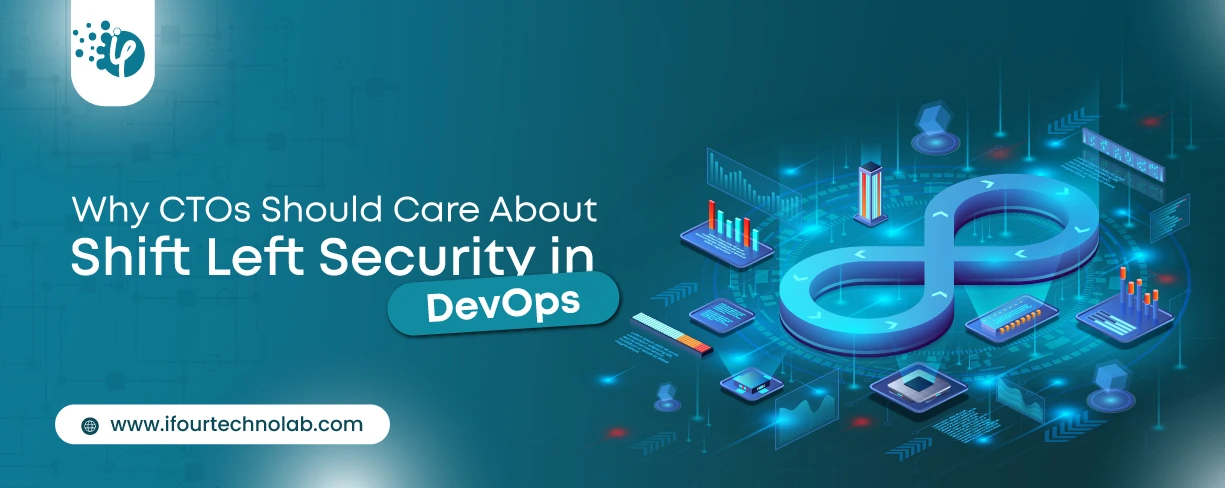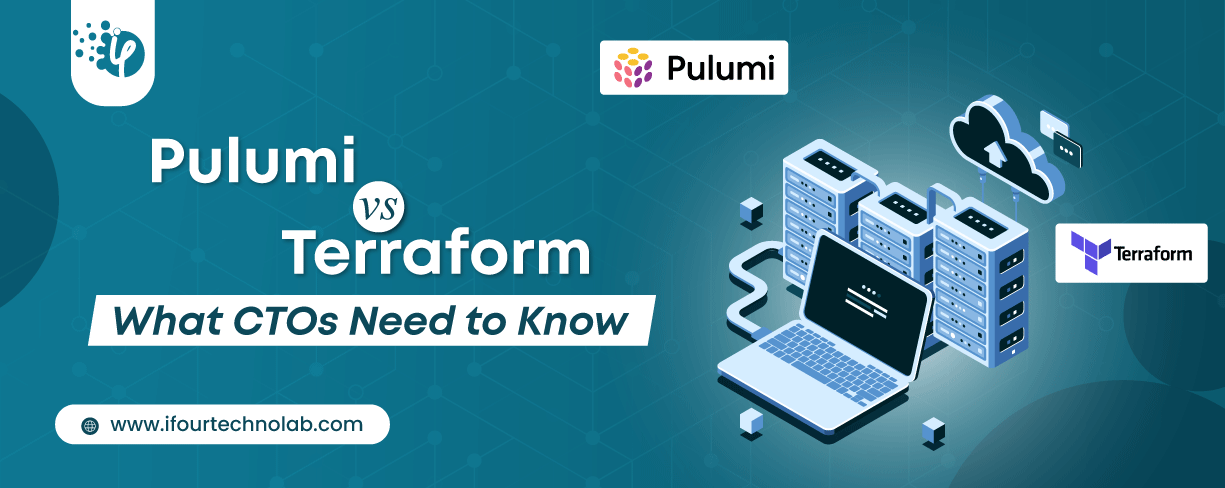Why CTOs Should Care About Shift Left Security in DevOps
Security has always been a major concern. Your company spends millions on cybersecurity tools, and guess what? You’re still vulnerable. When you're working in the cloud, especially...
Listening is fun too.
Straighten your back and cherish with coffee - PLAY !

MVP has become an indispensable factor through which many start-ups like Zappos, Dropbox, Twitter, Uber, etc. have got impeccable success in the market. MVP stands for Minimum Viable Product. It is the technique of implementing and delivering a product with just basic features and functionalities.The right audienceusingyour primary product would provide youquality feedbackand this helps you to make future iterations accordingly.
Keeping an eye on the future, MVPwould help you to find the right balance between the user needs and your product features. Rather than spending a huge amounton a product, quickly launching it with a basic idea at a marginal budget would make greatsense.
In this blog, we willhighlighta list of ideas and easy ways to buildthe MVPof a product.
"When you are looking to build an MVP for a software development company., you must first start with your market research. If it does not fit into what customers are wanting, it will not be the thing that you need to build. Your market research is vital in getting to the core of your customers problems, and how your work can help to solve those problems. This may take some time in the beginning, but it is well worth it. It is much better to take the time in the beginning to create the right build, instead of starting too fast and it being the wrong thing for the customers completely.”
- Daniel Foley, Founder of Daniel Foley
"The best idea to build MVP is to go through thorough market data research. Almost 42% of MVP fail because of not conducting or doing proper market research. Before building an MVP, you must have to do market research about its features, popularity, cost, etc. things, and then after, you can start to build it. Along with this, you face lots of customer problems without market research because, ultimately, you are going to build MVP for the customers. If they are not satisfied, then you are not profitable.
Secondly, the value of MVP is most important for the users. If the user doesn’t find MVP valuable, they are gone, and you can lose your targeted audience without any communication with you. And this will be very frustrating for you. So, proper market research and MVP's value are the best ideas to build MVP for any software development company.”
"I feel building an MVP (minimum viable product) is best accomplished through tons of research and a brief period of agile development. When you create an MVP you're not looking to make something that's going to last. You'll iterate on your design. You'll make it better, more feature-rich, more polished. But you need to get something out that serves the market's needs, and you need to do it quickly.
My best advice is to spend a lot of time doing market research to find out what a MVP even looks like in your market. What features are expected? How polished should it be? How can you differentiate your product from all the others? Then create a milestone roadmap to develop the app as quickly as possible.
Make use of Agile practices and get something that works. Then test it extensively. Exhaustively even. Polish up the features you have and ship it, then look toward the future.”
- Dan Bailey, President of WikiLawn"When we're building out an MVP, we do our research first to determine what needs to go into it. This means looking at competitor's products and seeing what their key feat ures are and how users respond to them, then deciding what our own key features need to be.
Once those are developed and perfected through testing, the rest of the product is polished. UI/UX tends to take precedence at this point. When it's well-tested and as free of bugs as we can make it, we put it out to the public and announce a roadmap for the features we want to add down the line.”
- Jake Hill, CEO of DebtHammer"It is very important to create a solid foundation for creating an MVP (Minimum Viable Product). But among all things, the most essential one is that your MVP should have all the minimum features so as to receive proper market feedback. Also, one of the most common reasons for the failure of such a product is the lack of a niche audience. The market is always monopolized by a certain group and is very essential to create your own market of people. To create such a niche, your MVP should offer both something different and valuable. Secondly, marketing strategies have to be created while keeping your brand in mind. Without marketing policies, your product may go unnoticed. Lastly, your product should have a problem-solving aspect to it otherwise it will be useless to the users. To get this right, you need to conduct in-depth research to get into the customer's head.”
- Jennifer Willy, Editor at Etia.Com"The best way to build an MVP is to build something people want. Many successful products and services originate because a founder has taken the time and energy to solve a problem that they have or identify that isn't necessarily a completely new innovation but it solves a specific pain point or gives people pleasure. The idea of an MVP is not to build the perfect product but to build it good enough so that you can evaluate the idea to see if it has market-fit. Until it starts to get traction with your audience, you shouldn't spend a lot of money advertising it.
The most important part of designing new software is to research the market and understand if you're talking about reaching a small target market (ok) or a large target market (great). Next, new entrepreneurs typically fall into the trap of loading their software up in such a way that it's a very complex project. That temptation needs to be avoided. Your software should focus on solving a small set of problems and should do it very well using good user interface design and focusing on a positive user experience.
Lastly, once the MVP is out, customer feedback and iteration on the software is key to address bugs, unintended features, and tweaks to focus on the features users enjoy the most.”
- Steve R. Smith, CEO and Founder of Consumer Affinity"Our focus when building out a minimum viable product is to get something out that suits the market's immediate needs with the base, expected features and then iterate once we get feedback. I look at it as being similar to game development, with game devs choosing to release games in early access. The game has its base features in at that point. Ideally those are polished and offer a complete experience. But there's still more that can be added based on feedback, and definite ways to adjust what's there for better UX.”
- Adam Chase, President of Music Minds"Building an MVP is different than building a prototype. For an MVP, you need to ensure that the product provides some value and is usable for the customer and not just made for testing purposes. The idea is to get customer feedback, which won’t be possible without a functional product.
Here are some essential ideas to use when building an MVP:
It may seem like something fundamental, but for a software MVP, a poor team put together can result in a failed product. While it is great to have the ideators of the product on the team, you need people with technical expertise on the discussion table from the very beginning. This will help you bridge the gap between the ideator’s wants and the actual possibilities. A developer or a programmer will be able to filter out all the impossible attributes right at the beginning to make sure all the future processes are completed smoothly.
Once you’re done with the requirements specification phase and have defined all the product features, you can now prioritize them. You can categorize all the features into three lists; must-have, nice to have, and not needed. Prioritize them in the light of the effort you can make and the impact you expect them to have. With these lists, you can shape your MVP to be precise and work around your goal. You can now perform accurate testing of the functionalities.”
- Patrick Smith, Editor-in-chief at Fire Stick Tricks"When developing an MVP you want to focus on the key features of your product. This is about creating a framework where customers understand what the product is and the main features without investing your entire budget. Remember, 29 percent of start-ups fail because they run out of money. Your MVP should not take you very long, should not cost you a lot of money. It is essentially market research. Approach it accordingly.”
- Ravi Parikh, CEO of RoverPass"While building an MVP, time is of the utmost essence, so you need to prioritize your product features. Ideally, there are two things you need to ask while prioritising features; what features are absolutely necessary for the core actions of your MVP and what features can you define as add-ons? This will allow you to categorize your features as ‘must-haves’ and ‘not-necessary.’ So you can finish the development of your product with the must-haves and launch much faster.”
- Aslam Multani, COO & Co-Founder of Multidots"MVP success comes down to your market research in my experience. Research is not about what you, your friends/family like it is all about your target audience and what motivates them to purchase. As a small business owner you have to be scrappy and work fast with a limited budget. Surveys can collect data on habits and practices and focus groups allow you to probe deeper and ask questions to test assumptions.
When real customers are willing to pay real money for your product or service, you have a real business. Start with the fundamentals: Who are you and why should anyone care? If you're not passionate about what you're doing, then why should anyone else be? There's a lot of noise in every category, so if you don't have a unique story to tell and a new approach or idea that excites you, then go no further. Every great business is built on a great story so start telling yours to potential customers and see if they buy what you're selling. My tip is that market research and testing should always be done with real customers, not with family and friends (who may only tell you what they think you want to hear so they don't hurt your feelings).”
- Paige Arnof-Fenn, Founder & CEO of Mavens & Moguls"The best approach to MVP building is rapid prototyping. On the opposite, the apps ended up nowhere in terms of user traction when our client chose to skip the prototyping phase.
The way we do an app prototype is:
Design low-fidelity wireframes and confirm them with the client
Use the wireframes to build a clickable prototype
Share the prototype with the target users and use their feedback to refine it
Update the prototype with high-fidelity designs and verify with customers once more
When developing an MVP, we strip all unnecessary features. That’s why prototyping is so important — it lets us define the core of the product.
So, if we’re building, let’s say, a symptom tracking app, we build a symptom tracking feature that allows the user to get their health data into the app, and we connect that to the back end for doctors to be able to review this information. We don’t add appointment scheduling or a patient-doctor chat. Because those features are not essential; we’ll develop them when enough users stick with the platform. Instead, we’d build notifications that remind patients to submit their symptoms.
As you can see, building an MVP is not only about stripping secondary functionality but it’s as much about enabling encapsulating user experience, so that customers can fully explore the core features of an app.
When working on an MVP for an enterprise that’s looking to streamline its operations you can absolutely ignore the beauty and aesthetics. The purpose of the MVP will be to show whether it helps the company’s employees to achieve more, e.g., process more insurance claims. So you can use “developer” designs, i.e. whatever comes with the tools your software engineers are using. And you can focus on the UI later on.”
- Joe Tuan, CEO at Topflightapps"When you think you can no longer cut features, cut some more. Do you really need that configuration when you could just hardcode it? Do you need to have a complex deployment with lots of redundancies for only a few users?
Look for substitutions so you can ship a solution right away. You're looking to solve a problem or address a need, not to ship a specific UI. Can you use simpler UI controls? Do you need to build a whole chat engine when you could use email or an existing chat tool?
Use known software solutions and architecture if it's not your first product. It's fun for developers to learn new languages and be on the cutting edge, but if you're looking to ship something quickly with a limited budget it may not be the best time to introduce new problems to solve for your customers and your technology at the same time.”
- Cindy Potvin from Robotsbench.com"The absolute leanest and most minimal way to create an MVP is to not make anything at all…(hear me out).
Often times people build out an MVP and allow users to test and provide feedback while improving it. But what happens if no one uses it? Or if your MVP is too complicated? Or it’s lacking critical features and functionality? The point is, many people skip the critical step of actually vetting the IDEA itself of the MVP and ironing out specifically what the MVP should consist of.
Here’s the fool proof formula to creating a great MVP that gets traction without wasting time and money:
1. Do research in forums and communities to find problems that need solutions.
2. Create a mockup and description of your product and set up a simple one page landing page selling your MVP product (that you haven’t actually made yet) and send traffic to test response.
3. When a user attempts to join, register or purchase from your landing page, explain that the beta MVP is on the way and have them join a waiting list with their email.
4. Go make the MVP if the response was positive).
5. Email the waiting list giving users access to the MVP to test.
This works extremely well.”
- Andrew Maule, Digital Marketing Manager at Code Signing StoreMVP is an inescapable factor when it comes toproduct release. It is the key that led many start-ups such as Twitter, Dropbox, Zappos, etc. get success in the market.MVP enables your product to improve over time and helps you to figure out what features to put in to reach user expectations. In this blog, we have outlined significant ways and ideas to build the MVP of a product. Understanding these would not only help you to minimize the common mistakes of your product but also withstand the fierce competition.

Security has always been a major concern. Your company spends millions on cybersecurity tools, and guess what? You’re still vulnerable. When you're working in the cloud, especially...

Automation isn’t just a trend anymore. It’s a must-have for any business relying on the Cloud. As the firm grows, cloud infrastructure gets more complex. So, choosing the right Infrastructure...

Behind every diagnosis, there is a patient hoping for clarity, and a doctor striving to deliver it. That’s exactly where Microsoft Azure AI Foundry steps in. It’s the next wave...